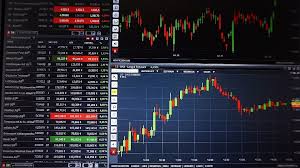Professional Guidelines for Forex Trading Framework 1652492000

In the dynamic world of Forex trading, having a robust framework is crucial for achieving consistent success. This article will delve into the essential components and professional guidelines that can help traders establish a comprehensive Forex trading framework. For deeper insights and resources, visit forex trading framework professional guidelines forex-level.com.
Understanding Forex Trading Framework
Forex trading is not merely about buying and selling currencies; it involves a structured approach that incorporates strategy, risk management, analysis, and psychology. A Forex trading framework provides the groundwork upon which traders can build their trading activities, ensuring they make informed decisions while minimizing risks.
Components of a Forex Trading Framework
The essential components of a Forex trading framework can be grouped into three main categories: strategy, risk management, and analytical tools.
1. Trading Strategy
At the core of every successful Forex trading framework is a well-defined trading strategy. This involves creating a comprehensive plan that outlines the approach a trader will take in the market. There are two primary types of strategies:

- Technical Analysis: This approach relies on historical price data, chart patterns, and technical indicators to predict future price movements. Traders utilizing this strategy often gauge market sentiment and identify potential entry and exit points based on past price behavior.
- Fundamental Analysis: This method focuses on economic indicators, news releases, and financial reports. Traders analyze factors like interest rates, unemployment rates, and geopolitical events to understand how they might affect currency values.
A successful trading strategy should also account for the trader's risk tolerance and trading style—whether they prefer day trading, swing trading, or position trading.
2. Risk Management
Risk management is an essential aspect of Forex trading that often determines a trader's long-term success. Proper risk management involves setting parameters that help safeguard a trader's capital while allowing for profitable trades. Here are some key elements of effective risk management:
- Position Sizing: Determine how much capital to allocate to each trade. A common rule is to risk no more than 1-2% of your trading capital on a single trade.
- Stop Loss and Take Profit Orders: Effective use of stop loss and take profit orders can help automate your risk management. Setting these orders ensures that losses are capped, and profits are secured, reducing emotional decision-making.
- Diversification: Avoid putting all your eggs in one basket. Diversifying your trades across different currency pairs can mitigate risk if one trade doesn't perform as expected.
3. Analytical Tools
Incorporating analytical tools into your Forex trading framework enhances your ability to make data-driven decisions. Some popular analytical tools include:
- Charting Software: Utilize software that provides advanced charting capabilities to analyze price movements and trends visually.
- Technical Indicators: Common indicators like Moving Averages, RSI, and MACD can help identify market momentum and potential reversals.
- News Calendars: Stay informed about upcoming economic events that could impact currency prices. Tools like economic calendars can provide insight into high-impact news that could affect your trades.

The Importance of Psychological Discipline
While strategy, risk management, and analytical tools lay the groundwork for a Forex trading framework, the psychological aspect of trading often plays a pivotal role in determining success or failure. Traders frequently face emotional challenges such as fear and greed, which can interfere with their decision-making processes. Developing psychological discipline includes:
- Sticking to Your Plan: Once a strategy is in place, adhere to it—even when faced with the temptation to deviate due to emotional reactions to market movements.
- Managing Emotions: Acknowledge the emotional ups and downs of trading. Implement techniques such as mindfulness or taking breaks to prevent impulsive decisions.
- Continuous Learning: The Forex market is continually evolving. Committing to constant learning and adaptation will enhance your knowledge and skills, ultimately improving your trading performance.
Review and Adaptation
Regularly reviewing your trading performance is vital to refining your Forex trading framework. This involves analyzing both winning and losing trades to understand what worked and what didn't. Key elements of the review process include:
- Keeping a Trading Journal: Document all trades, including the reasons behind entering and exiting, outcomes, and emotional states. A trading journal can highlight patterns in decision-making and reveal areas for improvement.
- Performance Metrics: Analyze metrics such as win-loss ratio, average gain/loss per trade, and risk-reward ratios to gauge your trading effectiveness.
- Refining Your Strategy: Be open to adapting your strategies based on performance reviews. The Forex market's nature may require different approaches at various times.
Conclusion
Establishing a solid Forex trading framework is essential for traders aiming for long-term success in the currency markets. By integrating effective strategies, meticulous risk management, analytical tools, psychological discipline, and regular performance reviews, traders can greatly enhance their ability to navigate the complexities of Forex trading. The journey may be challenging, but with the right framework in place, traders are better equipped to tackle the market and achieve their financial goals efficiently.
